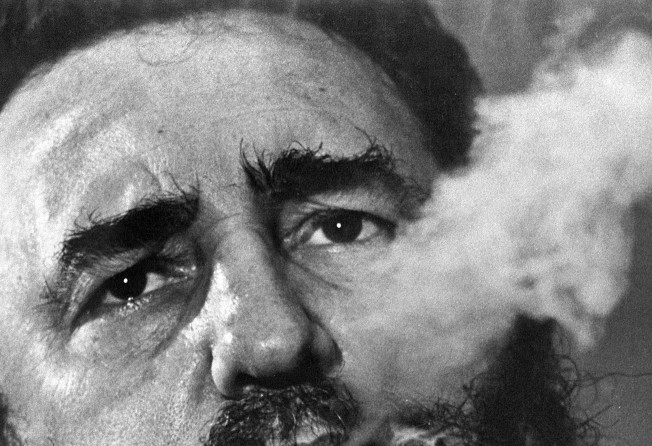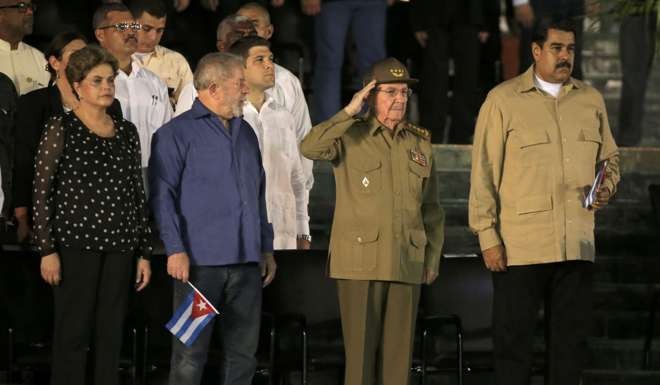Cuba’s sugar exports help explain the rise of Fidel Castro
Trade protectionism in the US acted as a block for Cuban agricultural exports and can explain the nation’s pivot towards the Soviets

The Cuban Revolution was an armed revolt by Fidel Castro’s 26th of July Movement and its allies against the authoritarian government of President Fulgencio Batista. The revolution began in 1953, and continued sporadically until Batista was ousted on January 1, 1959. The 26th of July Movement later reformed along communist lines, becoming the Communist Party in October 1965.
These events reshaped Cuba’s relationship with the US. Before the revolution, Cuba was one of the US’s strongest allies. Key Cuban industrial sectors were under the private control of US capital and agriculture was dominated by sugar production exported to the US market.
Watch: A look back on the life of Fidel Castro
Scholars have offered two interpretations regarding these ties and the origins of the Cuban Revolution.
Left-wing scholars blame the widespread economic inequality, exploitation, and dependence on the US as the underlying economic cause that invited revolution.
A major oversight in both interpretations is the neglect of the effects of increased trade protection in the US against Cuban sugar
Most leading scholars of the revolution counter that Cuba was not suffering from economic recession in the months before the rise of Castro’s July 26th Movement and that instead, the crisis was caused by the constitutional illegitimacy of the Batista dictatorship, a popular demand to restore democracy, and a loss of faith in a corrupt and sterile political system.
A major oversight in both interpretations is the neglect of the effects of increased trade protection in the US against Cuban sugar.
Eighty per cent or more of Cuba’s exports consisted of sugar and more than half was exported to the US. Both sides benefited, with Cuba helping the US to stabilise sugar prices by absorbing variations in the size of the US market in return for all the quota rights from future growth of the US sugar market.
However, during the 1950s, US domestic producers began to demand their own share of this growth and in 1956 Congress revised Cuba’s quota sharply downwards.
Cuba’s alternative markets were limited because other major sugar consuming countries practised protectionism. Still, with the 1956 revision, Cuban sugar producers had little choice but to sell a larger proportion of their sugar on the more volatile (non-US) world market, increasing risks and sugar earnings volatility.

Batista was closely allied with sugar interests in Cuba and suffered accordingly. The adverse sugar legislation caused the downfall of not only the pro-sugar members of Batista’s cabinet, but the Batista Government itself.
When Castro came to power, at first he did not express open hostility either to the US government or to private business interests. Consequently, during 1959, US companies made a net direct investment of US$63 million in Cuba, which was more than had been invested in most of the years since the second World War. But the sugar restrictions were strangling the Cuban economy. Gross earnings from sugar exports to the US represented about 15 per cent of Cuba’s national income.
As 1959 ended, Cuban leaders were determined to diversify their trade links. Che Guevara and Castro’s brother Raul, nudged Castro to seek Soviet economic support.
In February 1960, a Soviet trade delegation arrived in Havana and agreed to purchase Cuban sugar. In the US, this trade pact was viewed as an open invitation to extend communist influence in an American sphere of influence.
The guarantee of alternative markets for sugar exports strengthened the Cuban government’s position against the US. American oil refinery facilities owned by Standard Oil, Texaco, and Shell were nationalised.
In retaliation, in July 1960, Eisenhower cut existing and future Cuban sugar quotas to absolute zero. Four days later, the Soviet Union announced it would purchase the full quantity cut by the US. China also announced it would purchase Cuban sugar. After 1961, the Soviet Bloc and China absorbed the bulk of Cuba’s sugar harvests.
It is ironic that Fidel Castro died in the same year Donald Trump was elected President on a platform that promised trade restrictions. One worry is that renewed US protectionism will lead to more international disasters. Sadly, the Cubans are not the only ones to have paid the price of US sugar protectionism of 1956.
The sugar quotas Cuba lost were transferred to the Philippines with disastrous long-term consequences. The ruling latifundia reaped huge windfall profits, creating powerful incentives for popularly-elected President Ferdinand Marcos to extract a huge cut of their gains and rule as a dictator for two decades. Meanwhile the economy suffered heavily. Corazon Aquino, interestingly also a descendant of the latifundia , finally took him down in the 1986 People Power Revolution.
Richard Wong is the Philip Wong Kennedy Wong Professor in Political Economy at the University of Hong Kong